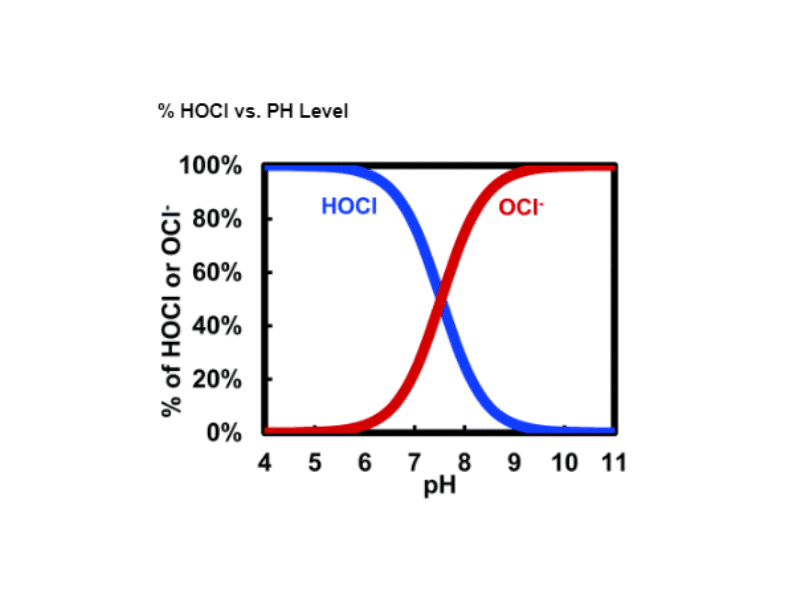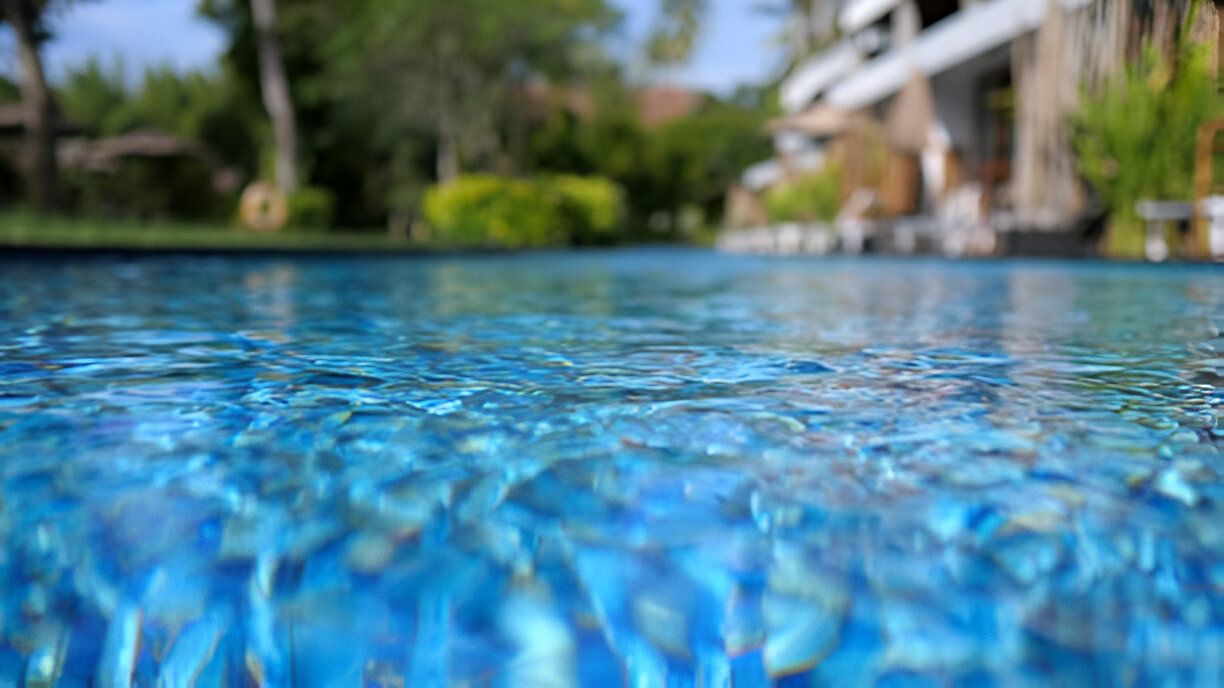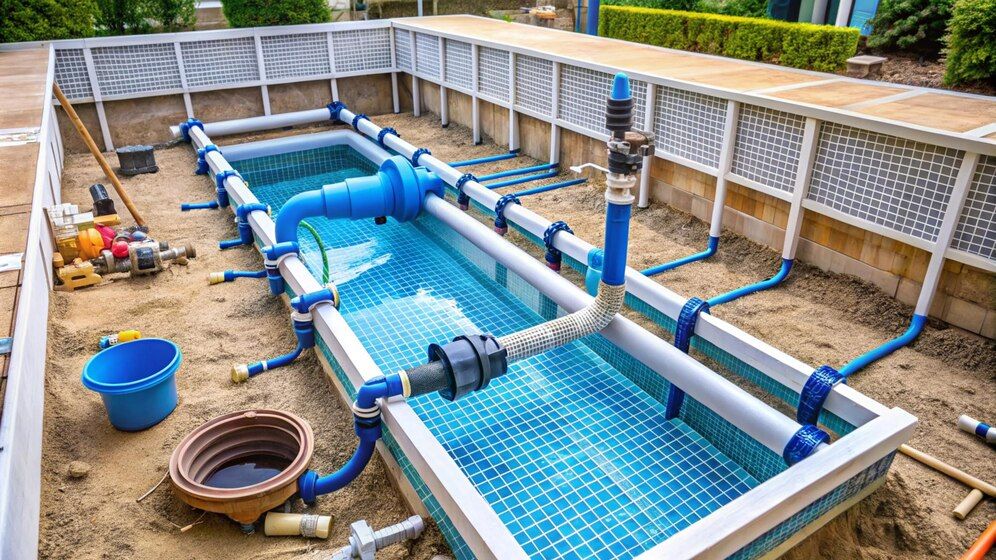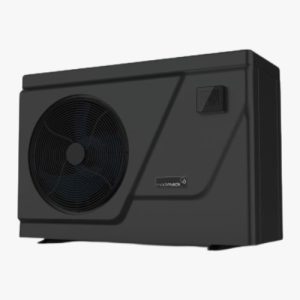
-
Dev Team
-
May 25, 2023
Why is My Pool Water Cloudy?
If you’re wondering why your pool is cloudy you’ve clicked on the right link. In this article we will uncover the causes behind cloudy pool water and find fast effective solutions to clear up your pool water.
Walking into your backyard to discover that your pool water has suddenly become cloudy can be a distressing experience, however it is more common than you think. At Clarity Pool Management Sydney we have dealt with a number of problem pools where the owners couldn’t manage to get to the source of their cloudy pool water.
Below we will go in depth on some of the main reasons that pool water can become cloudy so you can better understand the reasons behind this phenomenon, and we will give you the tools and knowledge to restore your water clarity and prevent it from becoming cloudy again.
Pillars Of Pool Care
- Filtration/Circulation
- Chemistry
- Algae Growth
We will take a deep dive into each of the pillars below and explain how each pillar can affect your water clarity.
Section 1: Filtration and Circulation
Filtration and circulation go hand in hand, which is you can’t have filtration without water circulating through the filter. On the flipside, without filtration circulation is just moving water around the pool without trapping any debris on the way.
Filtration is the process of capturing particles as they pass through the circulation system on their way back to the pool, it is vital to the health of your pool, it ensures that foreign particles are removed from the pool water lowering sanitiser demand and keeping the water clear.
However, without adequate circulation not enough water will pass through the filter in order to trap the debris and particles that exist, you will need to ensure that your pump is running long enough to turn over the entire volume of water in the pool once per day, this is especially important in the warmer months.
Circulation can be impacted by a number of factors such as a faulty pump, full leaf baskets, blocked lines, or a dirty filter. You must ensure that your leaf baskets are emptied regularly, and that your filters are cleaned or backwashed every 4-6 weeks, this will also improve your filtration efficiency and increase the lifespan of your filter media.
It is especially important to regularly backwash your filter if you are using sand as the filtration media, if backwashing isn’t performed at regular intervals the water will create channels in the sand bed leading to water passing through the filter (water will always take the path of least resistance) without coming into contact with the media resulting in unfiltered water returning to the pool.

Section 2: Swimming Pool Water Chemistry
TDS, PH, & LSI
Unbalanced pool water can result in your pool looking cloudy also, this is why it is extremely important to have your water professionally tested on a monthly basis. If your water is high in Calcium and Alkalinity this can lead to a high LSI reading, this condition can precipitate Calcium Carbonate (CaCO3) resulting in a cloudy appearance in the water. This is commonly referred to as carbonate clouding.
Some pool owners also experience carbonate clouding after they add Calcium increaser to pool water that has a high PH, when the PH is high the Calcium is not able to dissolve as readily leading to a cloudy experience in the water, in most cases the cloudiness will dissipate with time as the calcium dust settles on the floor of the pool.

Organic Waste
Non-living organic waste often introduced by bathers is another contributing factor tio cloudy pool water. When tanning oils, cosmetic products, sunscreen, urine, sweat, and dead skin cells are left to build up in the water you may start to notice that the pool water appears cloudy or oily.
These contaminants will often contain compounds such as Ammonia or Urea which will need to be dealt with in order to recover the crystal clear water that pool owners strive for. Chlorine itself is not well suited to organic oxidation. On its own Chlorine will quickly become overwhelmed when there is a large amount of organic waste in the water, this can lead to an Algae infestation that starts out looking cloudy and left unchecked will rapidly turn your backyard swimming pool into a green swampland.
There are chemicals available to assist with the breakdown of organic waste, alternatively you can supplement with a secondary sanitiser such as Ozone to ensure organic waste is broken down in the filtration system leaving Chlorine to do what it is best at which is sanitising.

Section 3: Algae Growth

Microorganisms such as Algae are living organisms that often find their way into backyard swimming pools around the country. The reproduction rate of Algae cells can vary from 3-6 hours, meaning if left unchecked the colony can double in size every 3 hours.
Sanitization is the battle between the kill rate of your sanitiser (in most cases this will be Chlorine) and the reproduction rate of the contaminant, more than likely Algae. When the reproduction rate exceeds the kill rate of your sanitiser an outbreak will occur as mentioned above this will start off with a cloudy appearance in your pool water before turning green.
The growth rate is fuelled by micronutrients that the algae feed off in order to reproduce, these are called Phosphates. If you have a high level of Phosphates in the pool water then there is plenty of food for the Algae to thrive, in order to curb the growth rate it is important to eliminate Phosphates from the water using a high quality Phosphate remover such as Lo-Chlors Starver.
The killing rate is dictated by the PH level, and the Cyanuric Acid level of the water along with your free available Chlorine level. Chlorine effectiveness declines on a sliding scale the higher the PH and Cyanuric acid (CYA) levels are, our recommendation is to maintain your PH no higher than 7.4, and no more than 30 ppm of Cyanuric acid in the pool.
Hypochlorous acid (HOCl is doing most of the heavy lifting when it comes to sanitising your pool, it has the fastest kill rate of any form of Chlorine, and as illustrated in the below tables the amount of HOCl in your pool water is dictated by the waters PH and CYA levels.
Free available Chlorine is essential to keep your pool sanitised, you should aim to have a residual free available Chlorine (FAC) level of between 2-4 parts per million, in saying that not all forms of Chlorine are equal.
Whichever form of Chlorine that is introduced to the water, whether it be from a salt/mineral chlorinator or physical Chlorine additions will convert into either HOCl or Hypochlorite Ion (OCl) the combination of which makes up your FAC reading, the PH and CYA level in the pool dictate which form is synthesised.
Studies have shown that HOCl is up to 80 times more effective at wiping out pathogens than OCl, this is in large part because the uncharged HOCl is more effective at penetrating the cell walls of microbes.
The higher the PH or CYA level the more (OCl) will be produced in favour of HOCl both of which make up your free available Chlorine reading. Hence the importance of keeping your PH and CYA levels in the recommended range.


Get In Touch
At Clarity Pool Management we are passionate about water clarity, if you are struggling to nail down the source of your cloudy pool water give us a call so we can help you get to the source and restore your pool back to its best.
Summary of Key Points
- Cloudy pool water is a common problem that can be distressing for pool owners.
- There are three main pillars of pool care: Filtration/Circulation, Chemistry, and Algae Growth.
- Filtration and circulation are crucial for maintaining clear pool water. Proper filtration removes foreign particles and debris from the water, reducing the demand for sanitizers and keeping the water clear. Circulation ensures that water passes through the filter effectively.
- Factors such as a faulty pump, full leaf baskets, blocked lines, or a dirty filter can impact circulation. Regular maintenance, including emptying leaf baskets and cleaning or backwashing filters, is important for efficient filtration and circulation.
- Unbalanced pool water chemistry can also cause cloudiness. High levels of calcium and alkalinity can lead to carbonate clouding, resulting in a cloudy appearance. Adding calcium increaser to pool water with high pH can also cause cloudiness. Regular professional water testing is important to maintain balanced water chemistry.
- Non-living organic waste introduced by swimmers, such as tanning oils, cosmetic products, sunscreen, urine, sweat, and dead skin cells, can contribute to cloudy pool water. Chlorine alone may be ineffective at oxidising organic waste, leading to algae growth and cloudiness. Additional chemicals or secondary sanitizers can help break down organic waste effectively.
- Algae growth is a common issue in swimming pools. Algae cells reproduce rapidly, and if left unchecked, they can double in size every 3 hours. Sanitization with chlorine is a battle against the reproduction rate of algae. Micronutrients called phosphates fuel algae growth, so it is important to eliminate phosphates from the water using a phosphate remover. The pH level, cyanuric acid (CYA) level, and free available chlorine level affect the killing rate of algae. Maintaining pH below 7.4 and CYA levels below 30 ppm is recommended.
- Hypochlorous acid (HOCl) is the most effective form of chlorine for sanitisation. It has a fast kill rate compared to hypochlorite ion (OCl). The amount of HOCl in the water is influenced by pH and CYA levels. HOCl is up to 80 times more effective at eliminating pathogens than OCl due to its ability to penetrate cell walls.
- Clarity Pool Management offers assistance in identifying and resolving the source of cloudy pool water to restore water clarity.









